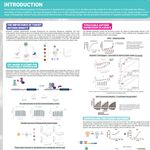Identifying Toxicologically Significant Compounds using in Vitro Bioassays and High-Resolution Mass Spectrometry
High resolution mass spectrometry (HRMS) offers the opportunity to use a single analysis to simultaneously measure concentrations of target compounds, screen for suspect compounds against large exact mass and/or MS/MS databases, and to look for unique marker compounds prior to their identification (non-target analysis). Statistical analysis of aligned nontarget feature abundances against bioassay activity offers a means for prioritizing identification of the most toxicologically significant features. This presentation describes the development of integrated workflows using liquid chromatography and gas chromatography coupled to quadrupole time-of-flight mass spectrometry (GC-Q/TOF-MS and LC-Q/TOF-MS) for wildfire ash, drinking water, and biomethane combustion products. These examples are unified by the need to consider the formation of unknown or unexpected byproducts that may pose toxicity risks via combustion, biotransformation, or other abiotic reactions.
Urban wildfires provide a good case study for this approach because the urban landscape includes not only vegetation, but also building materials, paints, furniture, solvents, pesticides, and other consumer products which may form a wide range of yet-to-be identified chemicals when the compounds in homes are burned at high temperatures. In one recent project, household-level composite ash samples were collected in Sonoma County, California, soon after the Tubbs fire on November 1, 2017 (3 destroyed homes in each of 4 neighborhoods) along with 3 samples from an undeveloped site upwind of the burned residential areas. Samples were solvent extracted and the extracts were analyzed using GC-Q/TOF-MS and LC-Q/TOF-MS. Separate extracts were analyzed using a suite of in vitro bioassays for their bioactivity toward nuclear receptors (aryl hydrocarbon receptor (AhR), estrogen receptor (ER), androgen receptor (AR)) and their influence on the expression of genetic markers of stress and inflammation (interleukin-8b (IL-8b), cyclooxygenase-2 (COX-2), and cytochrome P450 (Cyp1A1)). All genetic markers (Cyp1A1, IL-8b, COX-2) as well as the AhR activity were significantly higher in wildfire samples than in controls, while AR and ER activity were not. Samples from residential areas were not significantly different from ash samples from the reference site. Results of extensive suspect and nontarget screening to identify the chemicals responsible for elevated bioactivity using the multiple streams of HRMS data and open source data analysis workflows based on the programs MS-DIAL and MS-FINDER are reported.




